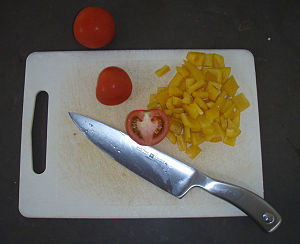"The appetite of countries such as ours for this grain has pushed up prices to such an extent that poorer people in Peru and Bolivia, for whom it was once a nourishing staple food, can no longer afford to eat it. Imported junk food is cheaper."Think about how that must be altering their lives, especially health-wise. And if they can't afford their usual foods do you think they can afford medical care if needed?
The article mentions other food crops grown to feed the developed countries of the world that have drastically changes life and ecological health in South American countries.
"Peru has also cornered the world market in asparagus. Result? In the arid Ica region where Peruvian asparagus production is concentrated, this thirsty export vegetable has depleted the water resources on which local people depend."Then today, this article came across my facebook. The author talks about her time as a vegitarian and learning that just because you aren't eating meat doesn't mean that you are doing the right thing for the environment.
"I visited the Korup National Park in Cameroon, one of Africa’s oldest and most diverse rainforests. In order to get to the park boundaries, I had to walk for miles though rows of glossy tea bushes where old women with baskets tied to their heads were bent over picking tea leaves in the harsh sun. There rising above this sea of green hedgerows of tea stood a single African Zebrawood tree, its shallow buttress roots spiraling out into the rows of tea bushes. Horrified, I realized that this tree was the only remains of a rainforest; this whole tea plantation used to be like Korup."I'm not going to argue that meat production is perfect either, but there are those out there, both in CAFO and pasture based systems doing their best to care for the animals and environment. There are also those in both systems who don't care.
Personally, I have friends who run the whole gamut of diet choices, from vegan and vegetarian to those who can't imagine a day without steak and for whom vegetable is a four letter word. I know those who grow their own food (both veg and meat) and those who have trouble thinking about meat having a face and name.
Each of these choices is ok. Providing that they understand their choices. No one way is perfect or the best. Each has up and downsides. They are all welcome in my home and I'll do my best to feed them a filling meal. But I will point out and correct when anyone starts spouting rhetoric as opposed to fact concerning their choices.
I hope that you think about where your food comes from and how it gets to your plate. Make your own choice, but be educated about all of the underlying factors connected to that choice.








